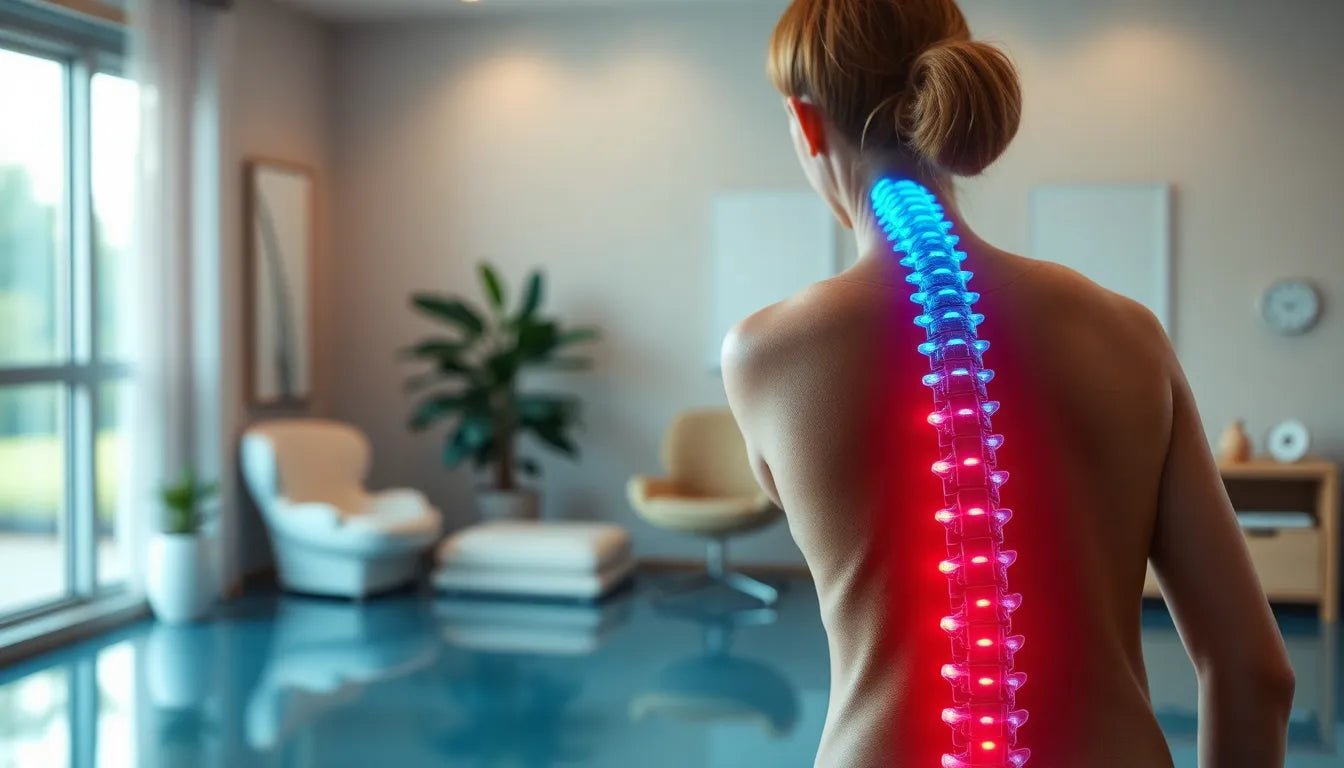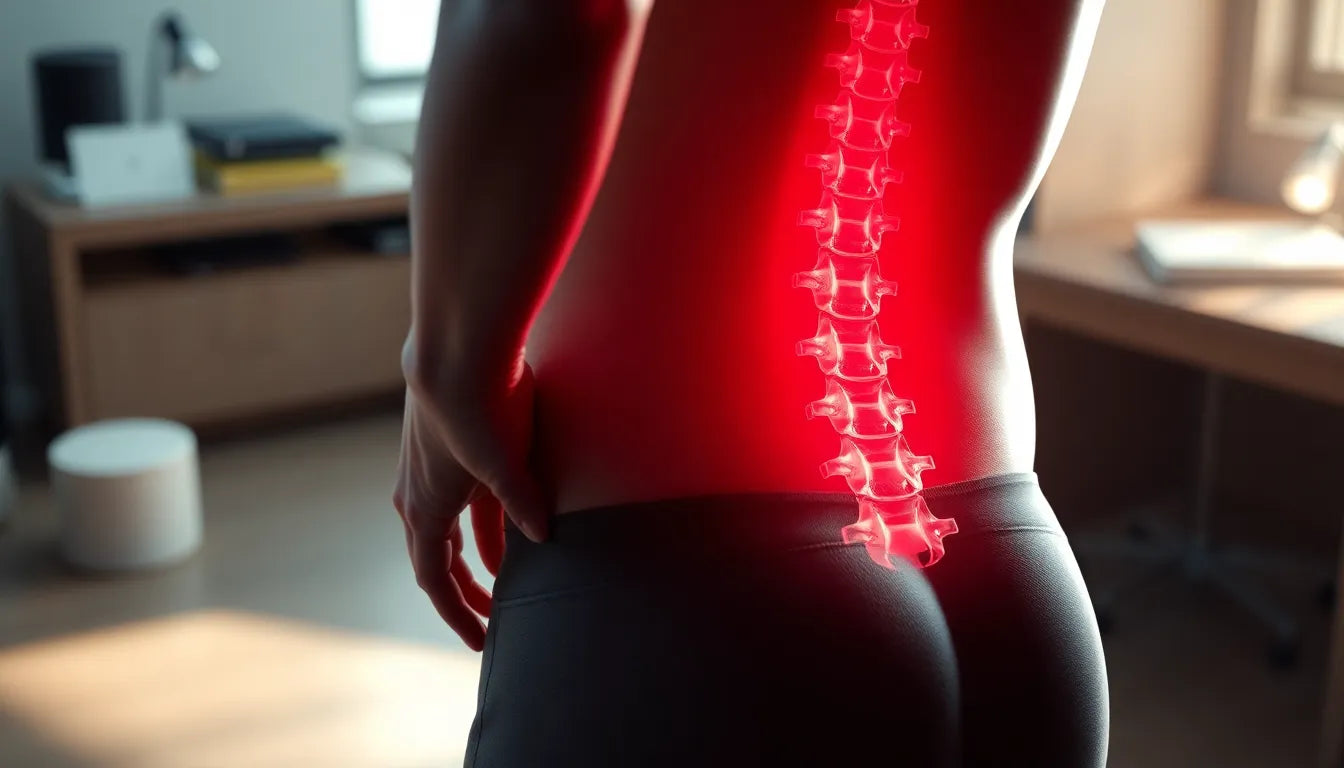Understanding how to sit with a herniated disc is crucial for anyone dealing with this common spinal condition. A herniated disc occurs when the soft inner gel of a spinal disc pushes through a tear in the tougher outer layer. This can result in pressure on nearby nerves, leading to symptoms such as back pain, numbness, and discomfort, especially when sitting. Proper sitting posture is essential not only to alleviate pain but also to prevent further injury and promote healing.
Understanding herniated discs
A herniated disc can significantly affect your spine and overall posture. The discs in your spine act like cushions between the vertebrae, allowing for flexibility and movement. When a disc herniates, it can cause a range of symptoms, including sharp pain, tingling, or weakness in the affected area. These symptoms often become more pronounced when sitting, as this position can increase the pressure on the spine.
The challenge of sitting comfortably
Sitting with a herniated disc presents a unique challenge. The natural curvature of the spine can be compromised, leading to increased discomfort. Many people find that their symptoms worsen when they remain seated for extended periods. This is why it's important to focus on the goal of this post: to provide practical tips and expert advice on how to sit comfortably and safely, minimizing pain and supporting spinal health.
Proper sitting posture is more than just a matter of comfort; it's a vital component of managing the symptoms of a herniated disc. By understanding the mechanics of your spine and making small adjustments to your sitting habits, you can significantly reduce pain and improve your quality of life. As we delve further into this topic, we'll explore expert recommendations and strategies to help you find relief and maintain a healthy posture.
Expert recommendations for sitting with a herniated disc
When dealing with a herniated disc, the way you sit can significantly impact your comfort levels and overall spinal health. Experts emphasize the importance of maintaining an upright posture to reduce spinal pressure. This means sitting up straight without slouching. Slouching can exacerbate the pressure on your spine, worsening the symptoms of a herniated disc. To achieve and maintain this posture, consider adjusting your chair so that your back is fully supported, and your feet are flat on the ground.
Align your back with the chair’s backrest
One of the key recommendations is to ensure your back is aligned with the chair’s backrest. This alignment helps maintain the natural curve of your spine, reducing stress on the herniated disc. Ergonomic chairs are particularly beneficial as they are designed to support the lumbar region. If an ergonomic chair is not available, a simple solution is to use a lumbar roll or a rolled-up towel for additional support. This can help you maintain the correct posture and alleviate discomfort.
Positioning hips and knees
The alignment of your hips and knees plays a crucial role in sitting comfortably with a herniated disc. Ideally, your hips should be level with or slightly higher than your knees. This position helps distribute your body weight evenly and reduces tension in the lower back. Ensure your feet are flat on the ground and your knees are bent at a 90-degree angle. Adjust your chair height or use a footrest if necessary to achieve this alignment.
The use of support
Supportive seating can make a significant difference in managing herniated disc symptoms. Placing a cushion or rolled towel in the lumbar region can provide the necessary support to maintain the spine’s natural curve. Selecting the right type of support depends on your seating environment. For instance, in an office setting, an ergonomic chair with built-in lumbar support is ideal. In other settings, such as a car or at home, portable lumbar cushions can be used to enhance comfort.
Movement and position changes
Prolonged sitting can aggravate the symptoms of a herniated disc. It is essential to incorporate regular movement and position changes into your routine. Experts recommend standing, stretching, or walking every 20-30 minutes. Setting reminders can help you remember to take these breaks. These simple actions can prevent stiffness and reduce pain, promoting better spinal health.
Alternative sitting options
When sitting becomes too painful, consider alternative positions. Slightly reclining with good lumbar support can reduce spinal pressure. This position allows the spine to rest in a more natural alignment, providing relief from pain. Additionally, lying down occasionally with a pillow between the knees can help if sitting becomes unbearable. This position can alleviate pressure on the spine and promote relaxation.
Understanding how to sit with a herniated disc involves more than just finding a comfortable chair. It requires a comprehensive approach that includes maintaining proper posture, using supportive seating, and incorporating regular movement. By implementing these expert recommendations, you can alleviate pain and prevent further injury, ultimately improving your quality of life.
Practical tips for sitting with a herniated disc
Adapting your sitting habits across different environments can significantly enhance comfort and reduce the strain on your spine. Here are some practical tips tailored for various settings to help you sit with a herniated disc.
Office setting
Creating an ergonomic workstation is crucial for those with a herniated disc. Start by adjusting your chair so that your feet are flat on the ground and your knees are at a 90-degree angle. The desk height should allow your elbows to rest comfortably at your sides, forming an L-shape. Consider using a chair with adjustable lumbar support to maintain the natural curve of your spine. Additionally, incorporate discreet exercises, such as seated leg lifts or gentle back stretches, to keep your muscles engaged throughout the day.
Couch sitting
Sitting on a couch can often lead to poor posture, exacerbating herniated disc symptoms. To safely lower yourself onto a couch, use your arm and leg muscles to control your descent. Once seated, place a pillow behind your lower back for lumbar support and consider reclining slightly to reduce spinal pressure. Ensure your feet are firmly on the ground or use a footrest to maintain proper alignment.
Car travel
Long drives can be particularly challenging with a herniated disc. Adjust your car seat to an upright position and use a lumbar cushion for added support. The seat should be close enough to the pedals to avoid overreaching, which can strain your back. Take regular breaks to stretch and walk around, especially during extended trips, to prevent stiffness and discomfort.
Concluding thoughts
Maintaining proper posture and making small adjustments in your sitting habits can greatly reduce pain and improve comfort for those with a herniated disc. Implementing these strategies across different environments will support spinal health and enhance your overall well-being. Remember, if your pain persists, it is important to consult with healthcare professionals for personalized advice and treatment options.
Frequently asked questions
What is the best sitting position for a herniated disc?
The best position involves sitting upright with your back supported, hips level with or slightly higher than your knees, and feet flat on the ground. This posture helps maintain the spine's natural curve and distributes weight evenly.
How can I reduce pain while sitting with a herniated disc?
To reduce pain, use lumbar support, maintain good posture, change positions frequently, and incorporate movement or stretching breaks. These practices help alleviate pressure on the spine and improve comfort.
Are there specific chairs recommended for people with herniated discs?
Ergonomic chairs with adjustable features and lumbar support are highly recommended for individuals with herniated discs. These chairs are designed to support the spine's natural alignment and reduce strain during prolonged sitting.
Can sitting in a reclined position help with herniated disc pain?
Yes, slightly reclining with proper lumbar support can reduce pressure on the spine and provide relief. This position allows for a more natural alignment, easing discomfort.
How often should I take breaks from sitting?
It is advisable to take a break every 20–30 minutes to stand, stretch, or walk around. Regular breaks prevent stiffness and pain, promoting better spinal health and comfort.
Sources
- Dr. Kevin Pauza. "How To Sleep And Sit With A Herniated Disc Comfortably."
- St. Louis Pain Consultants. "How To Sit Comfortably With A Herniated Disc."
- YouTube. "How to Sit with Bulging Discs WITHOUT Pain."
- Barricaid's Blog. "How to Sit on a Couch with a Herniated Disc."
- Pain and Spine Institute. "How To Sleep With a Herniated Disc - 4 Best Sleeping Positions."
- ISPP Center. "5 Ways to Manage Your Herniated Disc Pain at Your Desk Job."


















